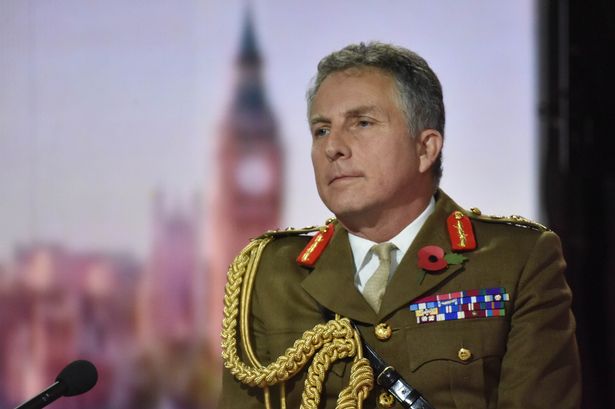In the age of artificial intelligence, robots will soon represent a large part of the armed forces, according to the UK’s chief of the defence staff Nick Carter, who predicted that up to a quarter of the army could be made up of autonomous systems in the near future.
Speaking on Sky News for Remembrance Day, the general speculated that as cyber and space join the more traditional army domains of land, air, and maritime, so will AI systems become an integral part of the armed forces’ modernization effort.
Carter warned that decisions haven’t been taken yet, and insisted that his predictions were not based on firm targets. He nevertheless shared his visions for an armed force that is “designed for the 2030s”.
“You’ll see armed forces that are designed to do (cyber and space). And I think it absolutely means we’ll have all manner of different people employed because those domains require different skill sets, and we will absolutely avail ourselves with autonomous platforms and robotics wherever we can,” said Carter.
“I suspect we could have an army of 120,000, of which 30,000 might be robots, who knows,” he said. The current trained strength of the country’s armed forces is just under 74,000.
The UK Ministry of Defence (MoD) is still scoping the opportunities that robotic and autonomous systems might open up for the army. The MoD has shown interest in the potential that AI-powered vehicles have to facilitate the logistics of convoy operations, for example.
Drones have received particular attention, and many research projects are already underway to understand how unmanned systems might assist soldiers in a variety of different operations. Equipped with cameras and sensors, and potentially even weapons, drones could carry out military work in the most challenging settings while keeping human operators safe.
Earlier this year, the MoD launched an innovation call for drone technology that can assist in “challenging and complex urban operations”. The department said that innovations in this space could remove service personnel and military dogs from dangerous urban warfare situations where their lives might be at risk.
“We are looking for ideas that reduce the mental strain on operators and improve performance,” reads the call, “but solutions must ensure that they remain under full human control at all times.”
The prospect of using fully autonomous weapons has been at the heart of heated debate over the past years and has given rise to activist campaigns such as the Campaign to Stop Killer Robots.
In 2018, concerns with the military use of robotic systems prompted Google employees who were working on drone video analysis software for the US Pentagon to leave the company, citing fear that their work might be used to kill people. After 4,000 staff petitioned for Google to quit the deal, the tech giant backtracked and announced the contract with the Pentagon wouldn’t be renewed.
Since then, the US Department of Defense (DoD) has published a 65-page long document detailing guidelines for an ethical use of AI in warfare, which determines that the technology should be used in a “lawful and ethical manner”.
Despite the ethical challenges, countries around the world are racing to develop AI-capable military forces. “Modernization essentially means that you’re going to park some capabilities that are perhaps from the industrial age, and want to look forward to the capabilities you need for an information age,” said Carter.
He mentioned the need for long-term investment in order to equip the UK army with cutting-edge technology – a topic that was at the heart of an integrated review launched by the government earlier this year, which set out to plan defense investment for the next five years.
The integrated review had to be postponed as a result of the COVID-19 crisis. While acknowledging the difficulties posed by the global pandemic, Carter maintained but long-term investment in robotic and autonomous systems would be key to sustain the army’s modernization efforts.



